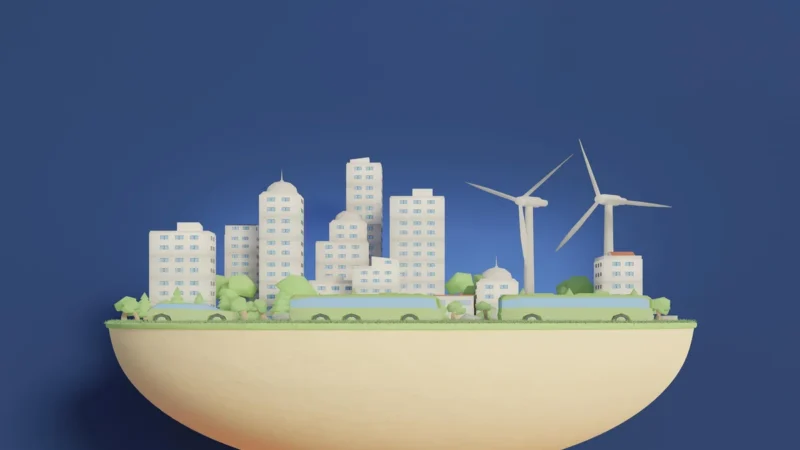Towards Sustainable Urban Development: Strategies for Global Environmental Change

In an era characterized by rapid urbanization and escalating global environmental challenges, achieving sustainable urban development has become an imperative goal. The convergence of population growth, resource depletion, and climate change necessitates innovative strategies to ensure that cities not only survive but thrive in the face of global environmental change. This article explores key strategies that pave the way towards sustainable urban development within the context of a rapidly changing planet.
1.Building Resilient and Adaptable Infrastructure
Sustainable urban development necessitates the creation of infrastructure that can withstand and adapt to changing environmental conditions. Incorporating resilient designs, such as elevated buildings to mitigate flood risks or energy-efficient systems that reduce greenhouse gas emissions, is crucial. Keyword: resilient infrastructure.
2.Embracing Green and Blue Infrastructure
Green and blue infrastructure, including parks, urban forests, wetlands, and sustainable water management systems, play a pivotal role in enhancing urban resilience. These natural solutions not only mitigate climate impacts but also provide recreational spaces and improve air quality. Keyword: green infrastructure.
3.Fostering Community Engagement and Participation
Empowering communities to actively engage in sustainable urban development initiatives can yield transformative results. Involving residents in decision-making processes, such as urban planning and resource management, not only improves the effectiveness of interventions but also enhances local ownership and social cohesion. Keyword: community engagement.
4.Enhancing Policy Frameworks and Governance
Robust policy frameworks and effective governance structures are essential for driving sustainable urban development. Implementing and enforcing regulations that promote energy efficiency, waste reduction, and sustainable transportation are critical steps towards achieving environmental goals. Keyword: policy frameworks.
5.Promoting Low-Carbon Transportation
Transportation is a significant contributor to urban emissions. Implementing efficient public transportation systems, promoting cycling infrastructure, and adopting electric vehicles can substantially reduce the carbon footprint of cities. Keyword: low-carbon transportation.
6.Prioritizing Circular Economy Practices
Transitioning towards a circular economy, where resources are used efficiently and waste is minimized, is imperative for sustainable urban development. Implementing recycling programs, reducing single-use plastics, and encouraging sustainable consumption patterns contribute to this goal. Keyword: circular economy.
7.Harnessing Technological Innovations
Leveraging technology, such as smart grids, sensor networks, and data analytics, can enhance urban resource management and improve the quality of life for residents. Smart technologies enable real-time monitoring and optimization of energy usage, waste management, and transportation systems. Keyword: technological innovations.
we can conclude this, In the face of unprecedented global environmental change, sustainable urban development has emerged as a guiding principle for the future of cities. By integrating resilient infrastructure, green and blue solutions, community engagement, effective governance, low-carbon transportation, circular economy practices, and technological innovations, cities can adapt, thrive, and contribute to the broader goals of environmental stewardship. The strategies outlined in this article provide a roadmap towards a more sustainable and resilient urban future, ensuring that cities become models of harmonious coexistence with the natural world.
FAQs
1.What is sustainable urban development, and why is it important?
Sustainable urban development refers to creating cities that balance economic growth, social equity, and environmental protection. It aims to meet the needs of the present without compromising the ability of future generations to meet their own needs. With urbanization and global environmental challenges on the rise, sustainable development becomes crucial to ensure livable cities that can withstand climate change, resource scarcity, and other threats.
2.How can green infrastructure benefit urban areas in the context of global environmental change?
Green infrastructure, such as parks, urban forests, and sustainable water management systems, offers a range of benefits. These natural solutions improve air quality, mitigate flooding, enhance biodiversity, and provide recreational spaces for residents. In the face of global environmental change, green infrastructure contributes to urban resilience and helps combat the negative impacts of climate change.
3.How can communities actively contribute to sustainable urban development?
Community engagement is key to successful sustainable urban development. Communities can participate in decision-making processes, collaborate with local authorities, and implement grassroots initiatives. By voicing their concerns, sharing local knowledge, and contributing to planning efforts, residents play a vital role in shaping urban development that aligns with their needs and values.
4.What role does technology play in achieving sustainable urban development?
Technology plays a significant role in modern urban development. Smart technologies, such as sensor networks, data analytics, and smart grids, enable efficient resource management. These innovations can optimize energy consumption, waste management, and transportation systems, leading to more sustainable and resilient cities.
5.How can policy frameworks and governance support sustainable urban development?
Effective policy frameworks and governance structures are essential for driving sustainable urban development. Governments can enact regulations that promote energy efficiency, waste reduction, sustainable transportation, and other eco-friendly practices. By enforcing these policies and fostering collaboration between public and private sectors, cities can make substantial progress toward their sustainability goals.


